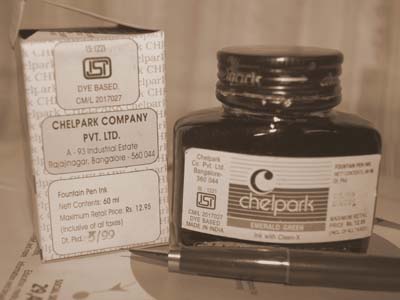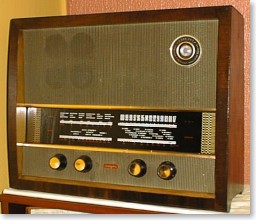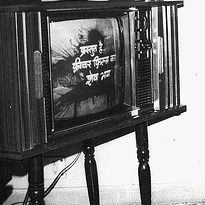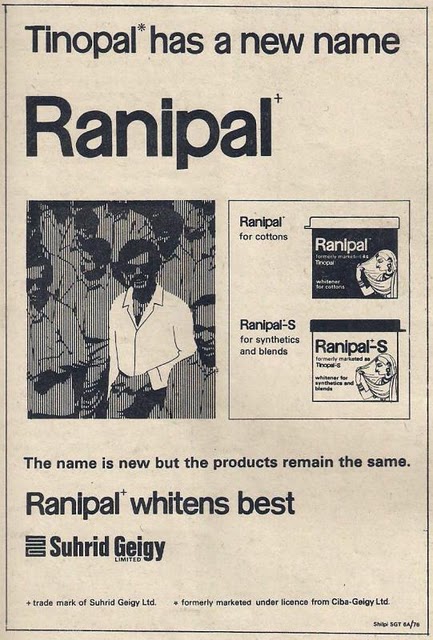As I age, I get a feeling that I am becoming more and more nostalgic about the simple life, limited number of options and opportunities that were present, good food, clean environment, closer interactions with people and less of noise and emissions that electronic-mechanical machines cause. The recent trip to my hometown has already made me even more wistful, in fact. However, ‘change’ is must for the humanity to progress and… sigh… I have to live with the present.
As for my childhood to college life, I have so many things to share some of which was mentioned in a recent post on this blog. Today’s post is about some of those great old brands and products that have been part of our lives during the 70s and 80s. Of course, some of them are still being produced and sold but have transformed for good while many of them have been discontinued. Here are the things that I am talking about:
1. Parry’s Green hard candy
Unfortunately I do not have a picture of this but I am sure anybody in their 30s and 40s must have eaten whole lot of them during their childhood. These candies – known as ‘Green Parry’ (‘Paccha pyaari’ in Malayalam) – was among the four or five wrapped candy options that we had at that time apart from those local made ‘uncovered’ ones. I remember, Parry’s competitor Nutrine introducing an imitation of the same several years later.
The Parry’s Confectionery ltd company was taken over by ‘Lotte ’several years back and this particular product has been discontinued since then, I believe.
2. Hero Pens
As far as I am concerned, this is the ONLY Made in China product that I have ever liked in my whole life and it was my first Chinese experience as well. Unlike today’s children, we never got to use the ball point pen s until the age of 12 (or sixth grade) on account of ‘bad hand writing’ resulting from ball point pens. Most of us started our writing with cheaper ‘Bismi’ or ‘Jubilee’ fountain pens and then progressed to using the Hero Pens (fondly called ‘Heero pena’ In Malayalam. Many of us in fact get to use it only for exams – for some not until the SSLC examination – and it was indeed a super smooth experience to use them. Mostly people used to get these pens as gifts from those who worked in the Gulf countries but later on they were available in shops for Rs.25 or so in stationery shops.
s until the age of 12 (or sixth grade) on account of ‘bad hand writing’ resulting from ball point pens. Most of us started our writing with cheaper ‘Bismi’ or ‘Jubilee’ fountain pens and then progressed to using the Hero Pens (fondly called ‘Heero pena’ In Malayalam. Many of us in fact get to use it only for exams – for some not until the SSLC examination – and it was indeed a super smooth experience to use them. Mostly people used to get these pens as gifts from those who worked in the Gulf countries but later on they were available in shops for Rs.25 or so in stationery shops.
The hero pens were cool due to their smooth quality of writing and the ability to fill ink via a cool press-suction operation. Old time pens had to be filled via direct pouring of the ink and we used to end up having the ink spilled on the floor as well as on our shirts.
As I moved to college, the Hero pen gave way to Pilots, Parkers and Sheaffers but the Hero fountain pen was always my hero!
3. Happy T-shirts
Now, this one is tricky and probably only Malayalis will understand what I am talking about. During those days mostly there would be at least one Keralite from every other household working in the Gulf countries (Generalized as ‘Persia’) and they make a visit once in every four or five years. At that time, everyone in the family – to the n’th relationship level – neighborhood and the village need to be gifted something or other. Cigarettes, cheap perfume sprays and synthetic clothe material or saris that will last beyond five generations were some of the cheaper options to keep everyone happy. Among these gifts, the kids usually gets the so-called “Happy T-shirt” which is nothing but a round neck T-shirt made of cheap synthetic fabric and a big H A P P Y written on it in a semi circle. We kids were, indeed, very happy to get them as gifts and would proudly wear them till they wore out. Those who wear Happy Tees were identified as the Gulf fellow’s son or relative.
(Several years later somebody revealed to me that a dozen of them would cost only something like 5 Dirhams or so and that’s how the poor Gulf Malayali could afford to buy them for everyone of our age group in that village. By the way, I do not know the actual the brand name of this T-shirt but it was always known as Happy shirt)
4. Chelpark Ink

I used the Chelpark ink for several years, I would say till I got my first job but had totally forgotten about it until my co-brother Manoj reminded me of that brand last week. In fact, that was the inspiration behind this post.
5. Camel instrument box
The camel brand of math instrument box is no brainer. Camel is still a leading brand in India for stationery and art-craft supplies. However, during our school days it was something big and getting a Camel box was an ultimate achievement in one’s otherwise limited wish list. Some of us get them during fifth or sixth grade and had to use the same till you pass out of 10th standard. Many times, the original paper sleeve wrapper around the box would be preserved intact for many years in order to protect the precious box from losing any of its print work on the surface.
For those who couldn’t afford to spend two rupees more, there were brands like ‘Nataraj’ and the twin-brother of Camel was the ‘Camlin’ brand of instrument boxes.
6. Premier rubber slippers

Talking about these Hawai chappals, most Malayalis wore them to school, colleges or even to work. And like their ultra white dhotis (Mundu), these slippers used to be maintained ultra clean was well. The jobless and educated mallu’s main hobby – apart from discussing international politics and Hartal or Bandh opportunities – those days was cleaning own slippers not just from the top but from sides and bottom as well.
I have used this brand of slippers for many years and I still have a pair of Paragon at home.
7. Murphy radios

These radios also had external antenna fittings and sometimes sporting a long mesh antenna – stretching from one end of the house to the other – was considered something royal. Due to issues in tuning or reception, most of the radio stations then used to sound like the distant Ceylon station. The cold starts used to be almost impossible and needed some heating via incandescent bulbs and occasional taps (out of frustration as well) on its wooden cabinet. Usually to listen to the 12:50 noon news (called Delhi news), one had to start preparing at around 12:30 itself.
Despite all the above issues, it was fun to see and listen to such a Murphy radio. And I almost forgot to mention the Murphy logo which had a sweet baby’s face.
Does anyone still have a vintage radio at your home?
8. Dyanora TV sets

Though I never ever liked Dyanora as a brand, I think it was one of the household names during those days and I remember it as the first TV I ever watched.
9. Vijay Super Scooter
Well, in a comment within my post about the Bajaj Chetak Scooter, I had mentioned about the Vijay super scooter. I learned riding on a Vijay super which is a discontinued model for years now. It was in fact something that looked like a Lamby and would run on a half-petrol half-kerosene mix. Though, this combination meant starting trouble and occasional ‘fut-phut’ sounds, I always remember it as the first geared two-wheeler I have ridden in my life not to forget the Luna moped which I had tried prior to that.
10. Tinopal
Now, how many of you can guess what it was? Tinopal (later it became Ranipal) was one of the clothe whitening agents (like Ujala) that I have seen my mother using during my childhood. It always amazed me because a drop of it was good enough for a bucketful of white clothes to make it surprisingly sparkling and smelling good. Its fragrance was similar to that of the modern fabric conditioners but I believe it was far superior. Sometimes, I just don’t understand why such brands were discontinued.

By the way, I managed to Google out this newspaper ad announcing the brand name change – Tinopal to Ranipal
Over to you
I am sure all of you have plenty to talk about those retro brands. I still have many in my list but some of them that I haven’t directly consumed or experienced.
Let me know if you have any pleasant memories to share about those products or old brands that you have seen, used or experienced 20 or 30 years (or even before) back!

